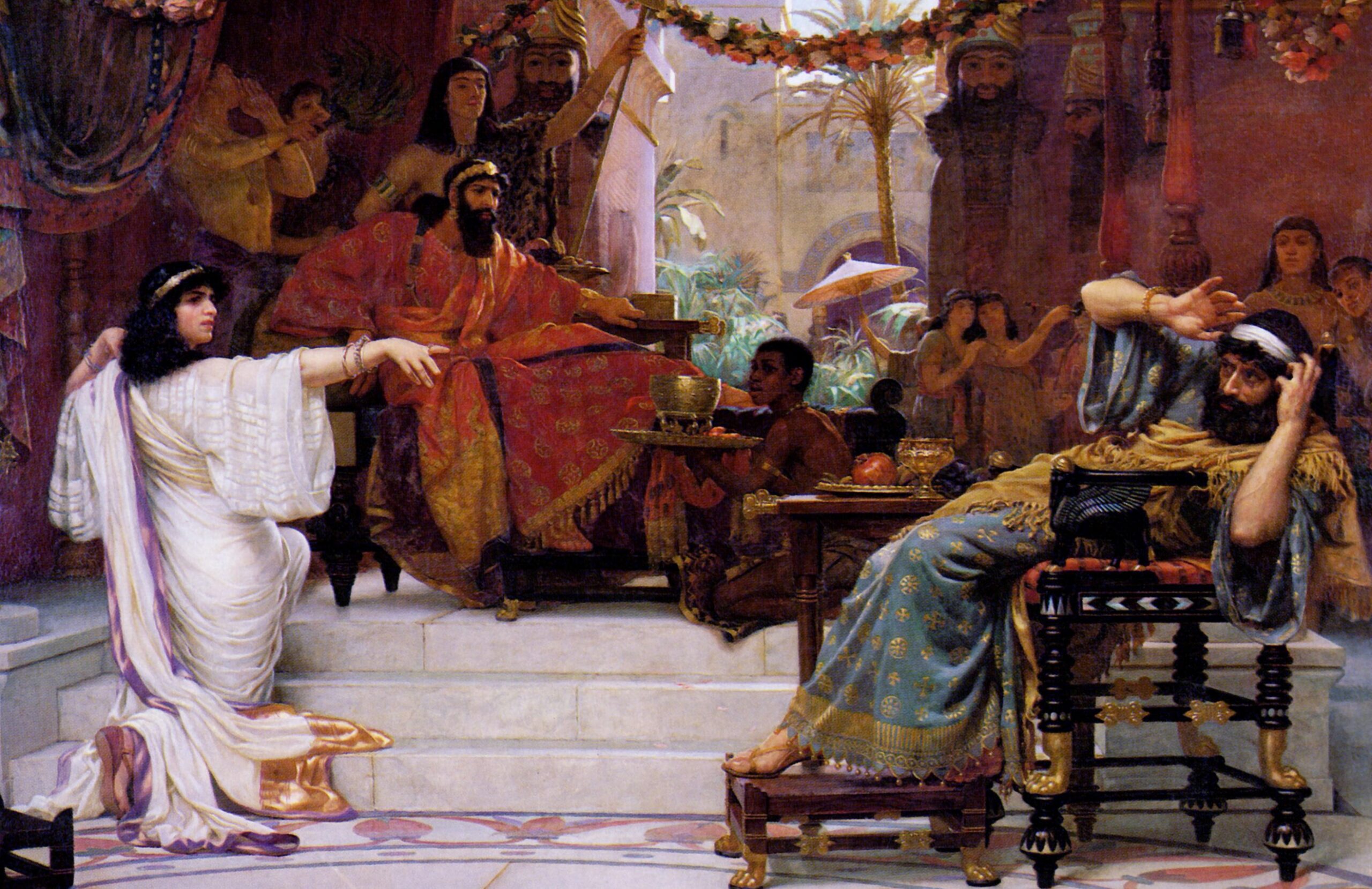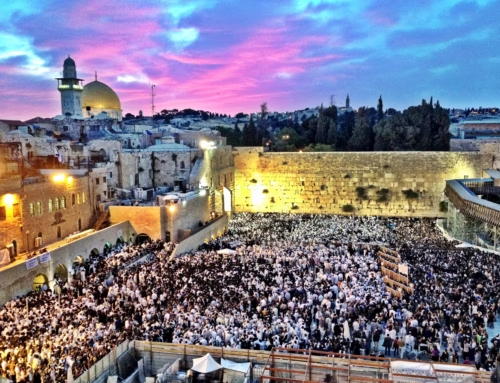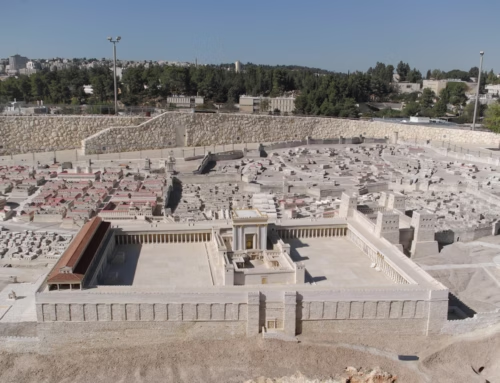Fasting before Purim
Purim is a Jewish holiday celebrating the salvation of the Jewish people through events that took place c. 500 BC as described in the book of Esther in the Bible.
The Jewish queen Esther urged her countrymen to fast for three days before pleading for their salvation from the plot of Hamas.

Esther confronts Haman. Photo of a painting by Ernest Normand from 1888.
The book of Esther recounts how Haman, an official of the Persian king Ahasuerus, made evil plans to destroy the Jewish people. These plans were thwarted by Mordecai and Esther who’d become queen of Persia after Ahasuerus took her to wife.
Queen Esther urged her countrymen to fast before her meeting with King Ahasuerus where she would plead for the Jews since Haman had issued a decree to wipe them all out. “Go and gather all the Jews who are in Susa and fast for me. You must not eat or drink anything for three days, neither day nor night. I and my maidservants shall also fast in the same way,” she declared. Esther 4:16, and now the thirteenth day of the month of Adar has become a national day of fasting in Judaism. The Purim celebration then begins on the evening of the 14th of Adar in the Jewish calendar, which this year falls on Saturday 23 March and ends in the evening of March 24.
Festivity and joy
The people’s rescue from Haman has become a day of festivity and joy among the Jews and as recorded in the book of Esther, Mordecai called on the Jews in all the provinces of King Ahasuerus to “celebrate the fourteenth and the fifteenth days of the month of Adar year after year because it was on those days that the Jewish people had respite from their enemies, their sorrows were turned into joy and their mourning into a holiday. They should celebrate them as days of feasting and rejoicing and send portions of food to one another and gifts to the poor.”
Public reading in the synagogue from the book of Esther is customary during this holiday.
The Jewish festivity of Purim is celebrated barely two weeks after the start of the Muslim holiday of Ramadan on the evening of March 10 when all adult Muslims must abstain from eating and drinking from dawn to dusk. All Muslims are also expected to “give alms and avoid violence, anger, envy, pettiness, greed and rumour-mongering during this month” (Wikipedia).
However, islamists in Iran, Gaza and the West Bank use Ramadan instead to incite violence, spread disinformation and seek conflict with Israeli authorities during this period of fasting. This year’s Ramadan comes amid the tensions of Israel’s ongoing war with Hamas, sparked by the terror group’s massacre of Israelis on October 7, when thousands of terrorists rampaged through southern Israel, killing around 1,200 people and taking 253 hostage.
Synagogues destroyed
The Al-Aqsa Mosque has in recent years become a religious symbol of the Muslim world’s opposition to the Jewish state, making access to the site during Ramadan a very sensitive issue. When Jordan occupied Jerusalem from 1948 to 1967, the Jewish Quarter was destroyed and all but one of the 35 synagogues in East Jerusalem were demolished. At the Jewish burial ground on the Mount of Olives, thousands of tombstones were smashed.
Hundreds of thousands of Muslim devotees usually visit the Al Aqsa Mosque site during Ramadan, which this year begins on March 10.
The Temple Mount where two biblical temples once stood is the holiest site in Judaism while over time the Al-Aqsa Mosque has become the third holiest shrine in Islam, making the site a central point in the Israeli-Arab conflict, writes the Jerusalem Post.
Israel will not change the number of people praying on the Temple Mount during the first week of Ramadan from previous years’ levels, the Israeli government announced ahead of this year’s Ramadan celebrations, though Hamas and Iran call for violence and riots during the Muslim holiday.


